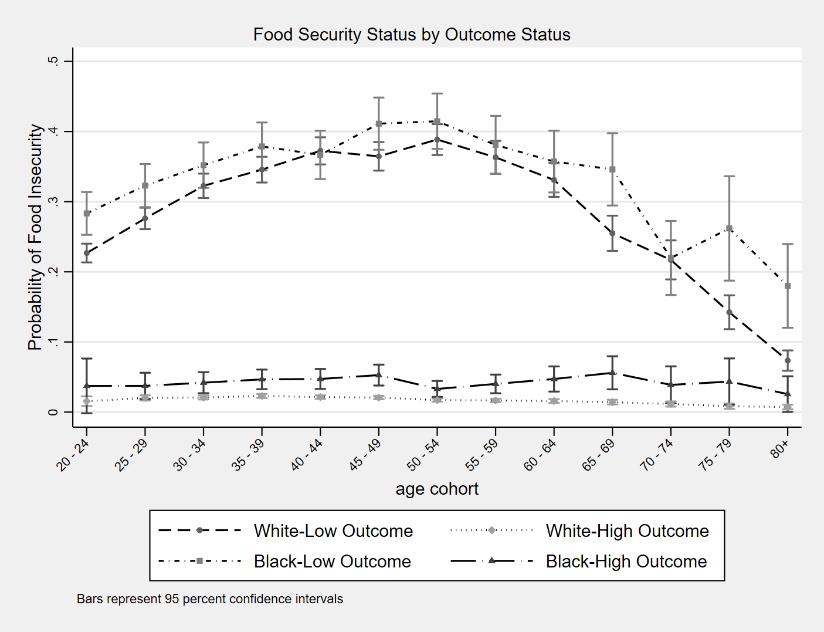Disparities in Food Insecurity among Black and White Households
AAEA members release new research in AEPP
Recent work released in Politico found that the COVID pandemic was much harder on black households than white in terms of food insecurity: “Stark racial disparities emerge as families struggle to get enough food. The pandemic has left Black and Hispanic households much worse off than white families.”
In the new article “Disparities in food insecurity among Black and White households: An analysis by age cohort, poverty, education, and home ownership,” researchers Joshua Berning, Alessandro Bonanno, and Rebecca Cleary from Colorado State University, explore differences in food insecurity (FI) between black households and white households in the United States.
 The authors say “Black households have a much larger predicted probability of being food insecure (PPFI) than white households. The gap is consistent across age cohorts and widens for older households. White households characterized by higher education, above poverty, or homeownership show the lowest PPFI, whereas black households with lower education levels, below poverty, or not homeowners have the highest PPFI.”
The authors say “Black households have a much larger predicted probability of being food insecure (PPFI) than white households. The gap is consistent across age cohorts and widens for older households. White households characterized by higher education, above poverty, or homeownership show the lowest PPFI, whereas black households with lower education levels, below poverty, or not homeowners have the highest PPFI.”
They continue “We also find, across most age cohorts, black households with high education levels have similar PPFI as white households with low education. Black households that are homeowners have, for several age cohorts, the same PPFI as white households who do not own a home, and even higher PPFI at the oldest age cohorts.”
“Even when we compare black and white households matched on a series of observable characteristics, the racial gap in PPFI persists. Overall, our results suggest that structural factors outside those capturing black and white households’ own-resources (e.g. education, wealth, income) may contribute to the disparity in Food Insecurity between the two groups.”
If you are interested in setting up an interview, please contact Allison Ware in the AAEA Business Office.
ABOUT AAEA: Established in 1910, the Agricultural & Applied Economics Association (AAEA) is the leading professional association for agricultural and applied economists, with 2,500 members in more than 60 countries. Members of the AAEA work in academic or government institutions as well as in industry and not-for-profit organizations, and engage in a variety of research, teaching, and outreach activities in the areas of agriculture, the environment, food, health, and international development. The AAEA publishes three journals, the Journal of the Agricultural and Applied Economics Association (an open access journal), the American Journal of Agricultural Economics and Applied Economic Perspectives & Policy, as well as the online magazine Choices and the online open access publication series Applied Economics Teaching Resources. To learn more, visit www.aaea.org.
Contact: Allison Ware
Senior Communications & Membership Manager
(414) 918-3190
Email: aware@aaea.org









